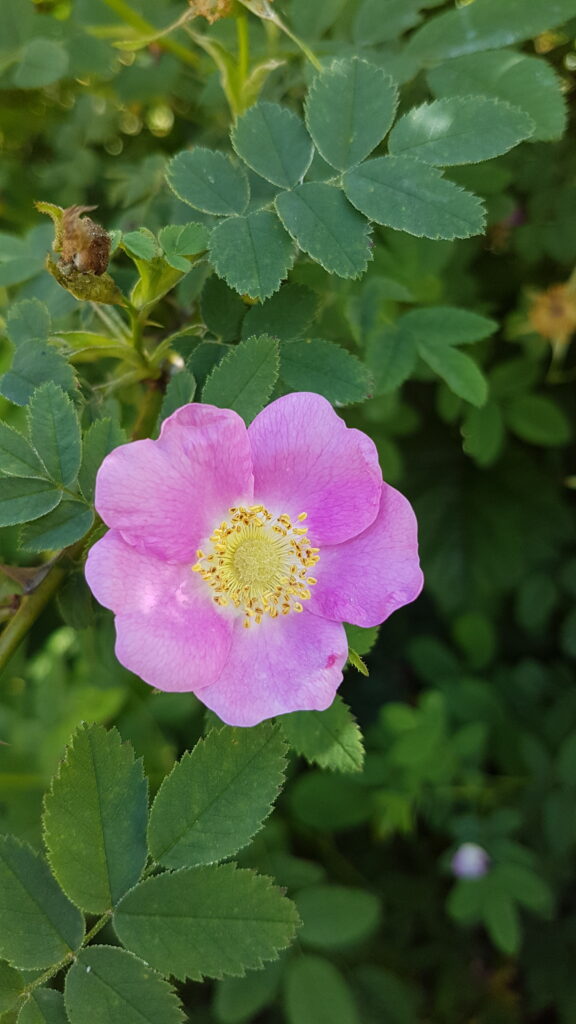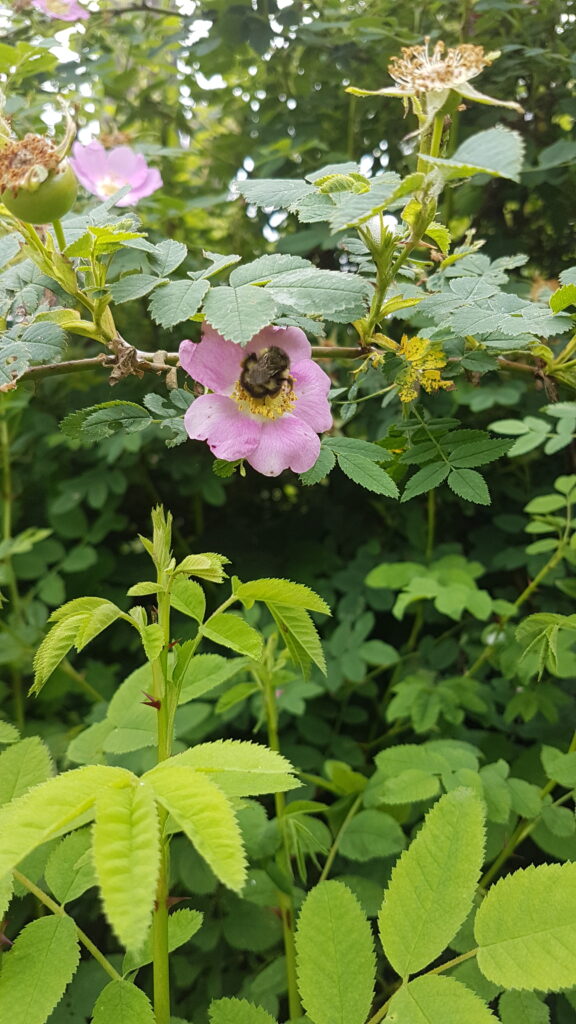Nootka Rose (Rosa nutkana)

Nootka rose (Rosa nutkana) is a member of the rose family that is native to Western North America. It has paired leaves which are oval-shaped, and have toothed edges. It also has thorny stems, and pink flowers with five petals. Nootka rose usually grows in open areas, including riparian habitats. It can spread through root suckers, and often grows in dense patches. Since it can spread quickly, Nootka rose is often used to stabilize stream banks and prevent erosion.

The fruits (rose hips) of the Nootka rose are very high in vitamin C, and can be used to make tea, jelly, or syrup. In the past, rose hips were often used as a treatment for scurvy due to their high vitamin content. Some First Nations communities would eat the hips and new shoots, and also used teas made from the roots, leaves, or hips as treatments for various illnesses.

Patches of Nootka rose provide shelter and food for small birds and mammals. The hips are eaten by birds, insects, and small mammals, and deer will eat the leaves and young shoots. Nootka rose flowers also provide food for pollinator species, and several butterfly species lay their eggs on its leaves.
For more information, visit the Nootka rose Wikipedia page or E-Flora BC.


